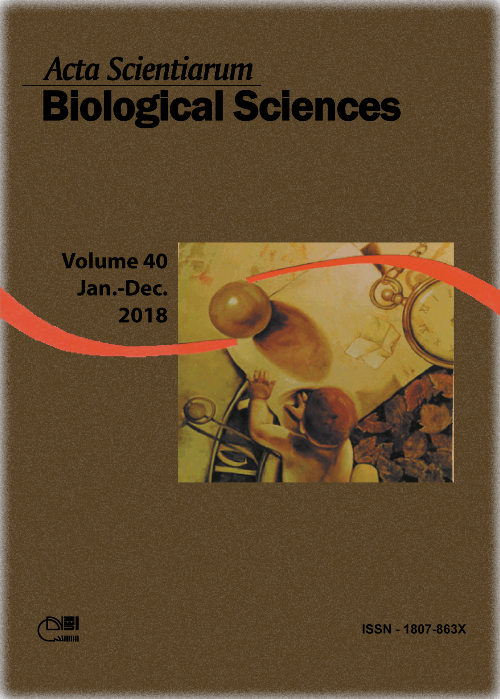<b>Leaf architecture and symmetry of understory tree species of an Araucaria forest
Abstract
Shade plants of ombrophilous forests are subjected to light-limiting conditions and need to invest in architectural structures associated with leaf symmetry to increase light capture. This study investigated the leaf architecture of six Araucaria forest tree species with distinct symmetry: Cupania vernalis, Casearia sylvestris, Schinus terebinthifolius, Piper gaudichaudianum, Roupala brasiliensis and Cedrela fissilis. We hypothesized that symmetry, associated with other traits, minimizes self-shading. Asymmetry index, petiole length, total leaf area, leaf angle, internode length and stem diameter were measured. The asymmetry index did not indicate a clear distinction between asymmetric and symmetric leaves. Leaves classified as asymmetric had higher values for the asymmetry index in the median and basal regions of the leaf, while symmetrical leaves had higher values in the apical region. The results also indicated an adjustment among structural leaf traits that facilitated a three-dimensional organization that produced an advantageous arrangement for light capture, which seems to be a response to selective pressure by the heterogeneous light conditions of the ombrophilous forest understory.
Downloads
DECLARATION OF ORIGINALITY AND COPYRIGHTS
I Declare that current article is original and has not been submitted for publication, in part or in whole, to any other national or international journal.
The copyrights belong exclusively to the authors. Published content is licensed under Creative Commons Attribution 4.0 (CC BY 4.0) guidelines, which allows sharing (copy and distribution of the material in any medium or format) and adaptation (remix, transform, and build upon the material) for any purpose, even commercially, under the terms of attribution.
Read this link for further information on how to use CC BY 4.0 properly.












1.png)




3.png)













